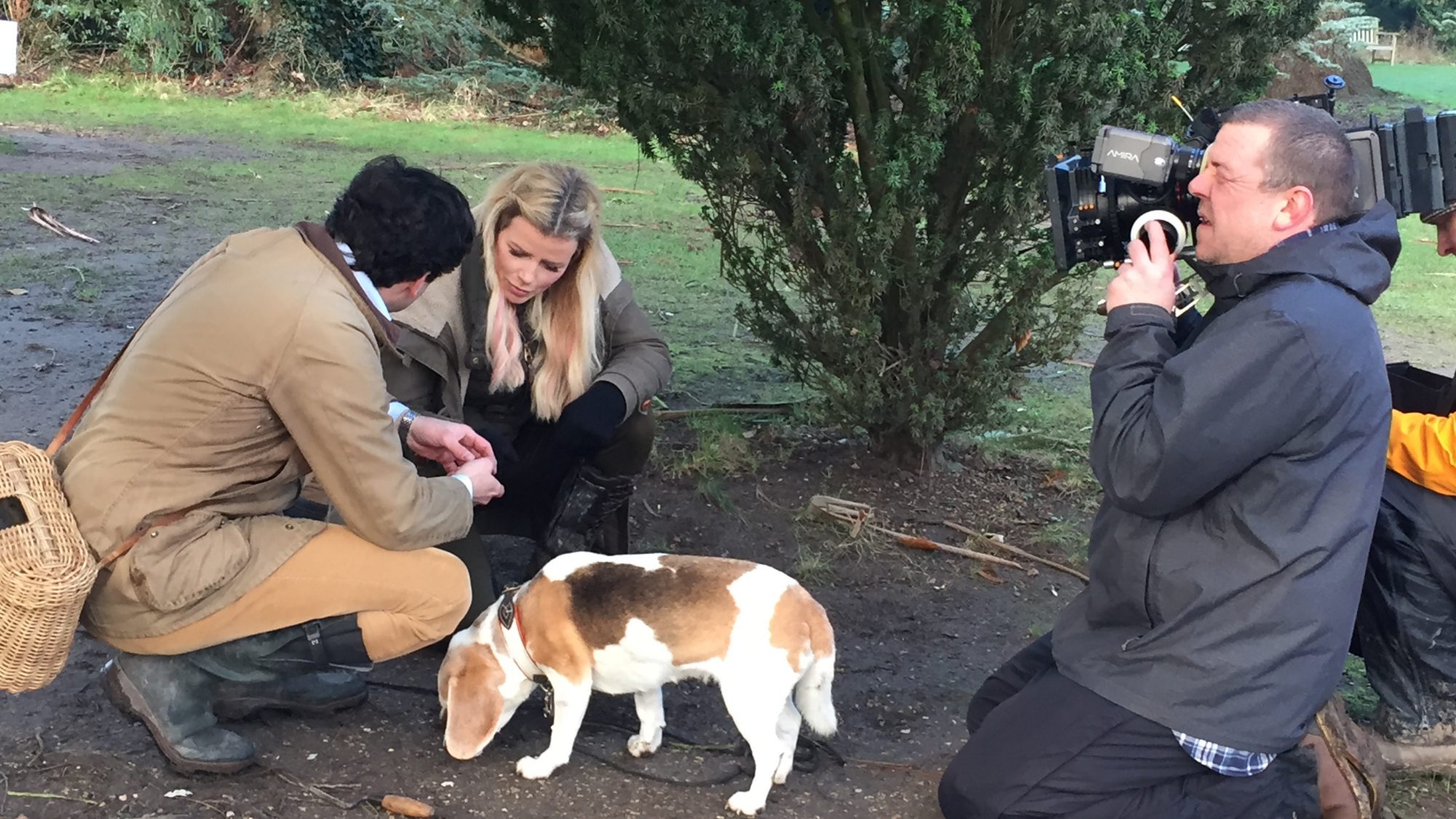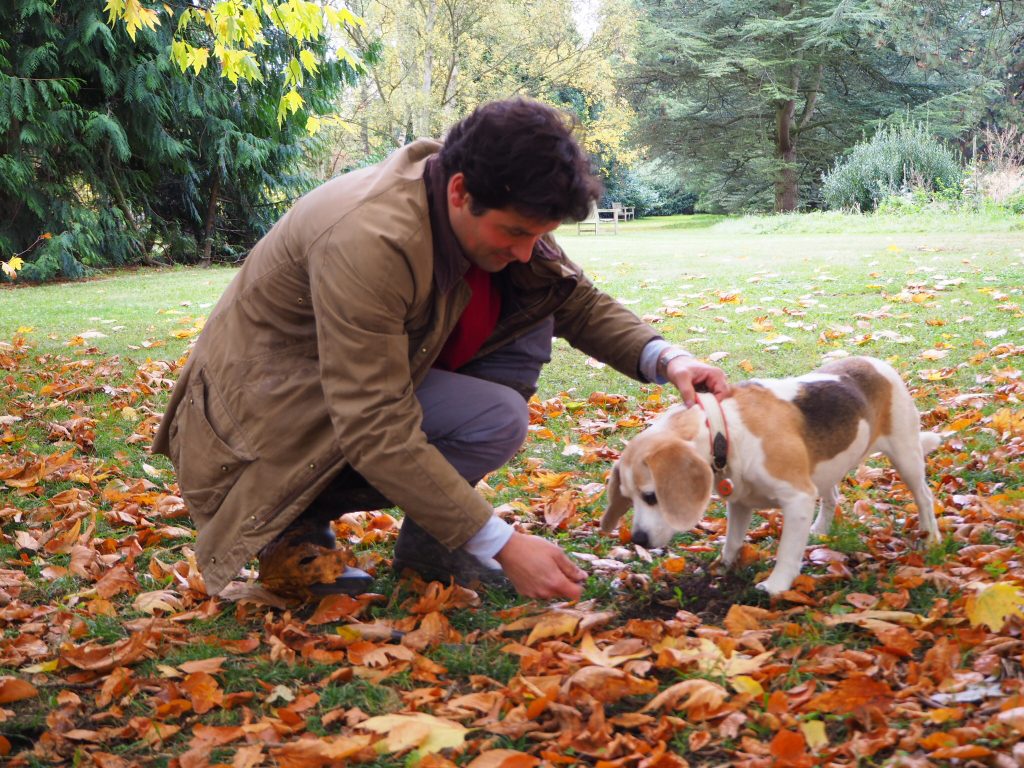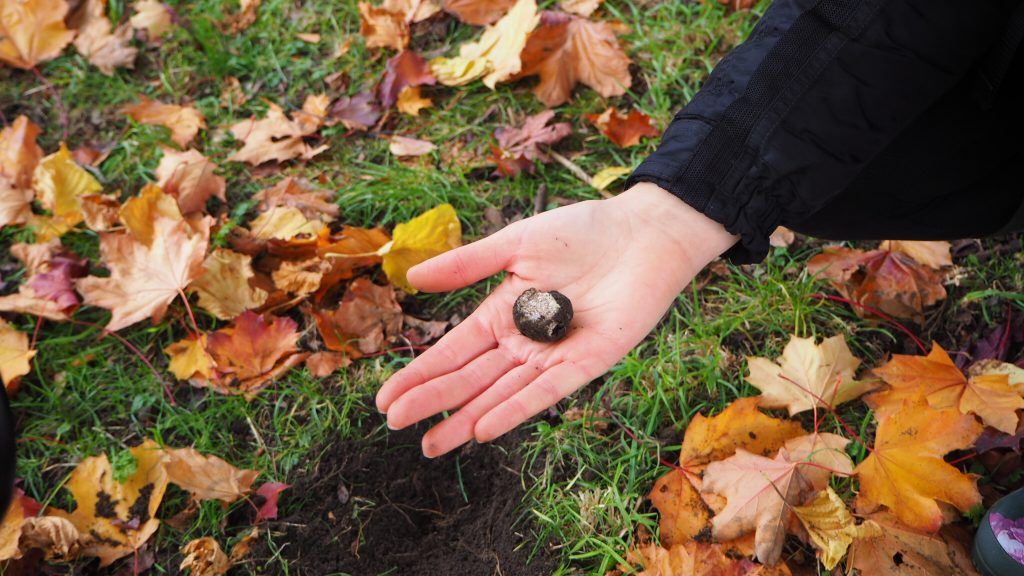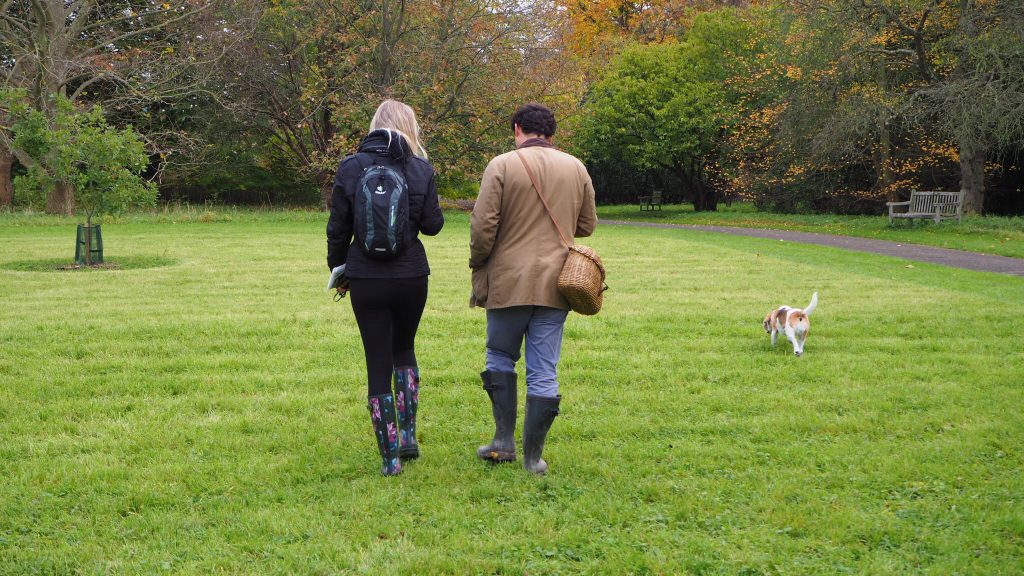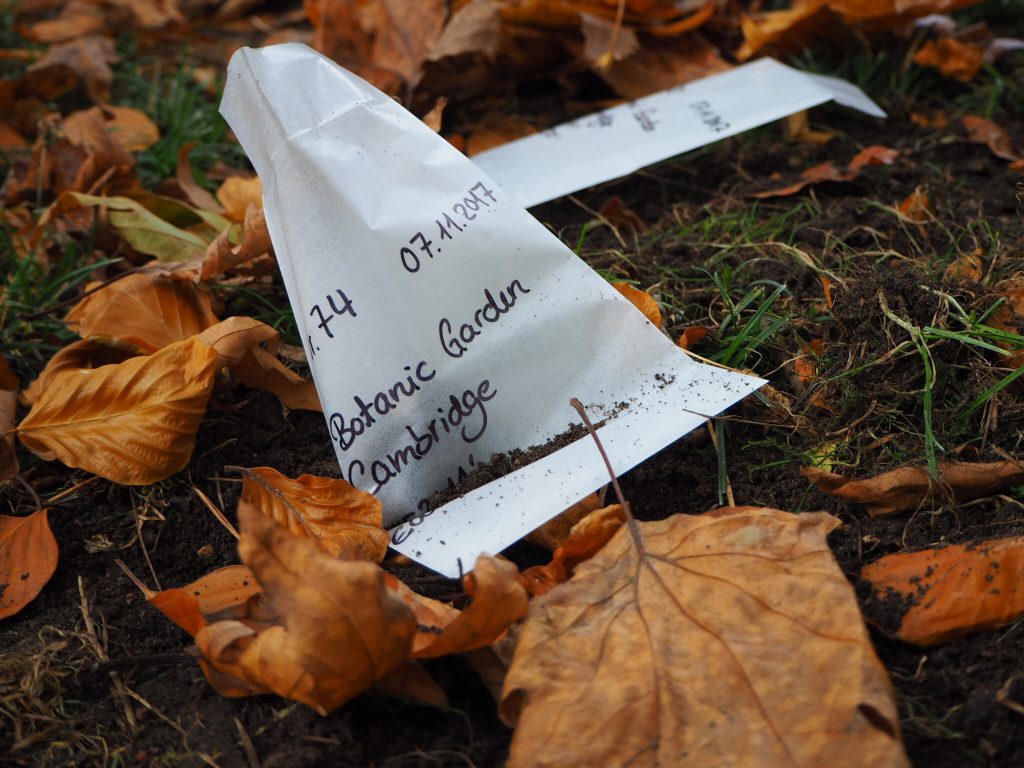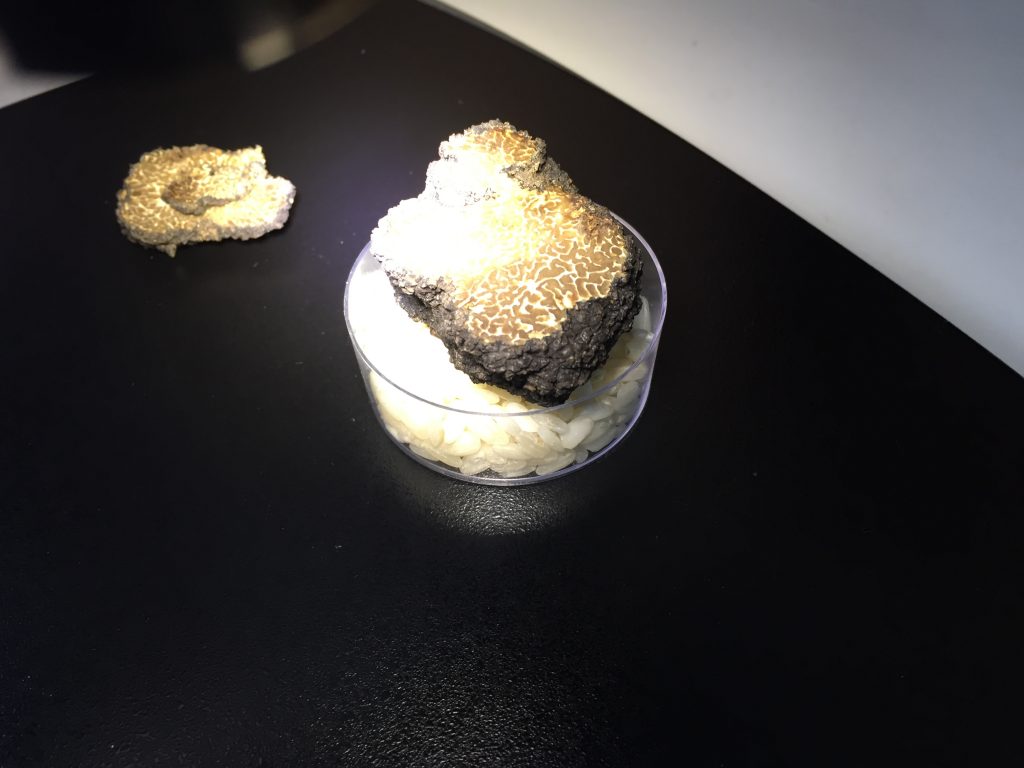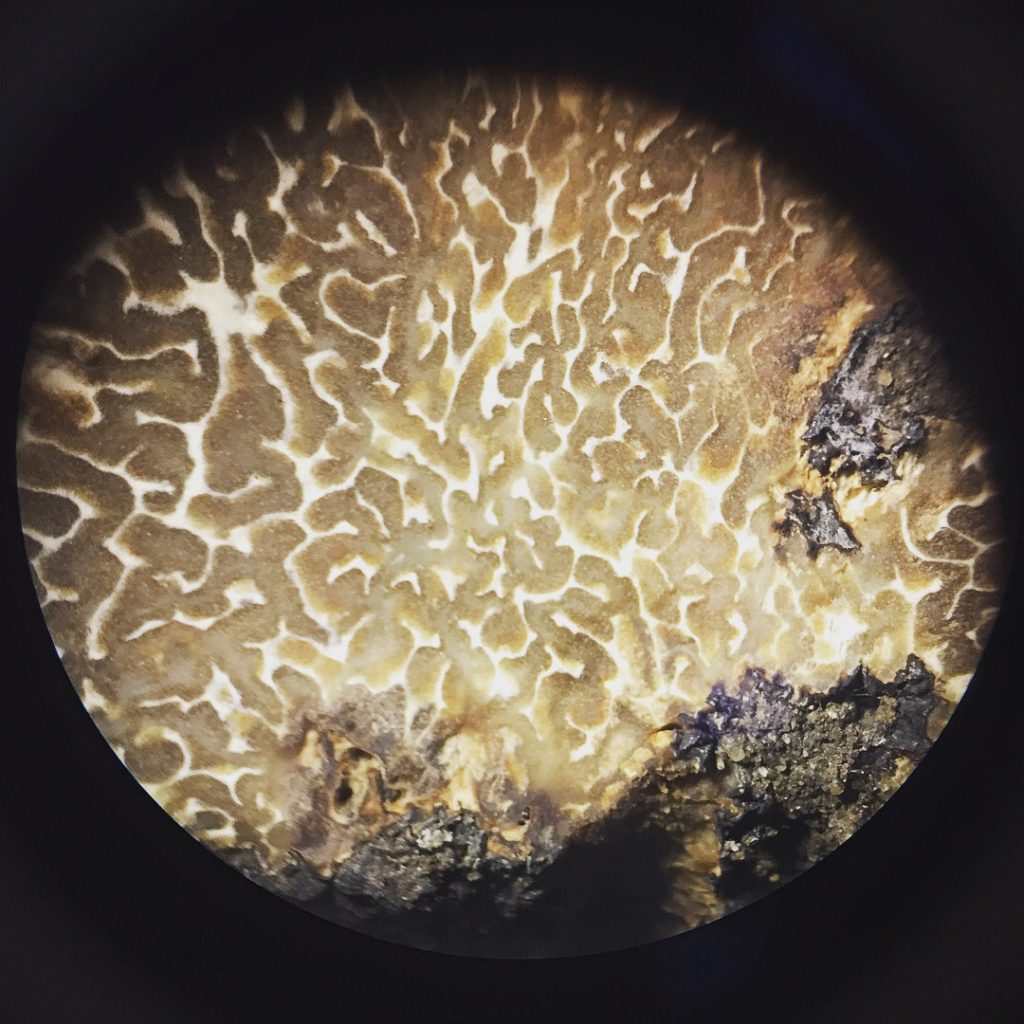The programme will be aired on Sunday 11th February at 6.30pm on BBC1, and will be available on BBC iPlayer for 30 days afterwards.
FAQs about truffles:
What type of truffle are found in the Garden?
The truffles that are found in the Garden are Burgundy truffles, this British native truffle can be found widely in England.
How many truffles are you finding, and how big are they?
Pretty small numbers – only 3 on the most recent visit – and in general terms, the truffles are very small.
What are they worth?
As Burgundy truffles are relatively common, they are not expensive compared with the rarer and different species such as the Perigord black truffle which command a high price tag. Wedo not have those rare and expensive truffles growing at the Garden!
Can you eat these truffles?
Yes they are edible, but these truffles are not being eaten and are being used for scientific research only. It is important to note that truffles are fungi and, as with all fungi, it is NEVER safe to eat a wild mushroom or truffle unless a mushroom identification expert says so.
Will they be used in the Garden Café and can we buy them?
All the truffles are strictly used for research purposes only. There are none left over to go on sale or for use in the Garden Café, or by others – for culinary reasons or otherwise.
What happens to them once they’ve been dug up?
The coordinates of where the truffles are found are mapped before taking them to a lab for analysis. Each truffle collected is weighed and measured by researchers to define their ripening/maturity degree. Samples are stored for a detailed genetic assessment.
Are they just in CUBG or growing throughout Cambridge?
This research is concentrating on CUBG, however we suspect that the Garden might be representative of the wider area and so truffles might be present throughout the region. The British Mycological Society has records for the Burgundy truffle found in many counties of the UK.
Does it take particular expertise to find the truffles?
Yes, experience and ideally a trained truffle hunting dog are required to locate truffles. A pig was traditionally used in major truffle-growing nations like France or Italy, but now people prefer to use a dog and/or their own experienced hunting methods.
About the research:
Professor Ulf Büntgen from Cambridge University Department of Geography, along with PhD student Elisabeth Johnson, are researching the growth of truffles in CUBG using Ulf’s pet dog Lucy to detect the truffles. They map the coordinates of where the truffles are found before taking them to the lab for analysis. They hope to use this information to help them discover how, when and where truffles grow and mature, how their spores are dispersed and by which animals, and how their lifecycle is affected by changing environmental conditions, including climate. The hope is that this research will unearth a new understanding of the secret life of the underground delicacy of the truffle as very little is known about the biology and ecology of these unassuming-looking members of the mushroom family.
Truffles are well renowned for being a food delicacy. Some of the rarer species such as the Perigord black truffle command an extremely high price tag, however the truffles in CUBG are not this variety and are more common and therefore less valuable.
Ulf and his team have begun a ‘natural’ experiment to study the seasonal changes in productivity of the Burgundy truffle. Burgundy truffles are more common than the Périgord black truffle and found across Europe and parts of England, including we now know, the Botanic Garden.
“We really don’t know much about the life of a truffle,” explains Ulf. “No-one has succeeded in creating the necessary complexity of real-world conditions in a normal lab to understand the below-ground lifecycle of the truffle. What is special about the Botanic Garden is that it is an almost perfect 170 year-old living laboratory, potentially allowing us a glimpse into the ecological requirements and community structures of truffles and their symbiotic host partners across time and space. It is an immense privilege to be able to carry out this kind of research at and across this historic site.”
What is known is that truffles live in symbiotic partnership with the fine root systems of trees – the plant delivers sugars and the fungi provide nutrients. However, as soon as the truffle is unearthed, the truffle’s ecosystem, including its mutualistic partnership, is destroyed. The Garden has one of the finest collection of trees in the eastern region of England, which makes it a perfect location for this study.
The results from the long-term Botanic Garden experiment will be combined with a larger study of around 30 sites in Switzerland, Germany and Spain.

